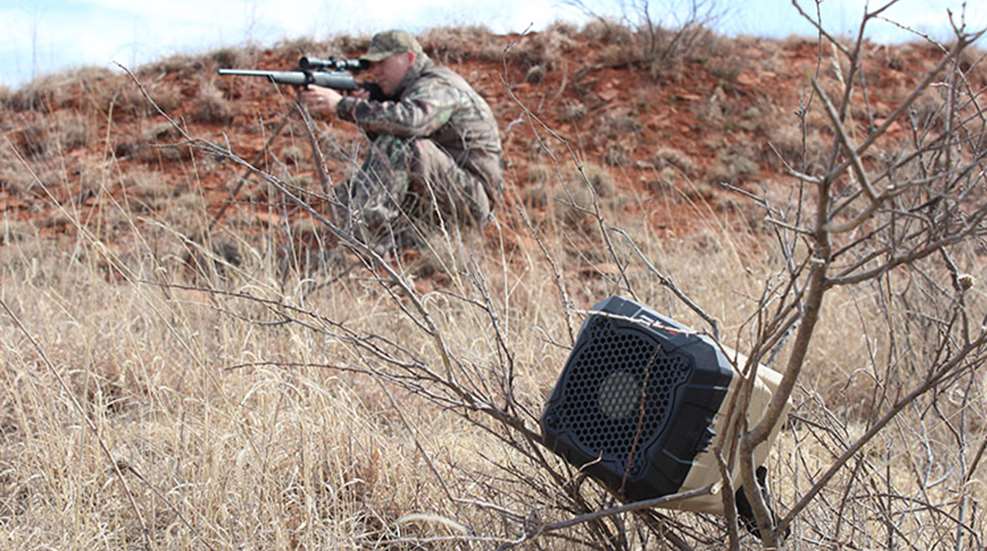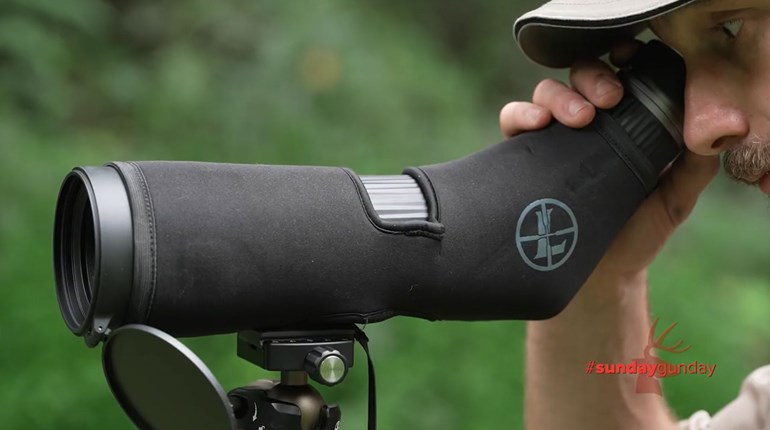
With electronic predator callers, the modern-day coyote hunter has at his disposal a massive sound library at the touch of a button. These callers also come equipped with fancy handheld remotes (some with LCD screens), lightweight bodies that make them easier to carry and high-quality speakers that blast sound far across the wide-open prairies of the Midwest. But even with all these features, it is not as simple as setting out the caller, pushing a button and waiting for a coyote to run into range. If you want to consistently call in more coyotes, it all comes down to where you place the caller. Here are three tips to put you on the right track.
1. Place the caller at a reasonable distance. Some of the new callers come with remotes that have a range of up to 200 yards, but the ideal distance is 30-75 yards. Set the caller close enough that if a coyote hangs up while coming to the call, it is still within shooting range. If the caller is at 75 yards and a coyote halts 100 yards beyond it, you still have a mid-range shot. Even though a lot of coyote hunters are equipped to make a longer shot, we can all agree our success rate is much higher at 175 yards than 300. As a rule of thumb, place the caller no farther than 100 yards; this ensures the majority of coyotes that investigate the calls will end up within reasonable shooting range.
2. Keep the caller elevated. Most callers on the market have folding legs, tripod adapters or a handle of some type to get them off the ground. Elevating the caller prevents its sound from becoming muffled and also allows the remote to work more effectively. For example, the Johnny Stewart Grim Speaker GS2 has a speaker base with a ratcheting handle, which you can hang on a fencepost or a limb of a tree or bush. Think of it this way: If you can hear the sounds more clearly when the caller is elevated, so can a coyote. If the caller is buried in a clump of grass or is sitting in a depression, its position will not only block sound but also may interfere with the signal from the remote to the speaker—both of which can lead to frustration.
3. Pay attention to wind direction. Every predator hunter knows you set up with the wind in your favor, and it’s no different when setting up your caller. In general, try to place the caller directly in front of you. With the wind blowing in your face, point the speaker straight away. If there’s a crosswind, face the speaker into the wind. Placing the speaker so it faces the wind allows the sound to carry best. The majority of coyotes will try to circle downwind of the caller, so sit where you can see downwind to catch a coyote in shooting range.




































